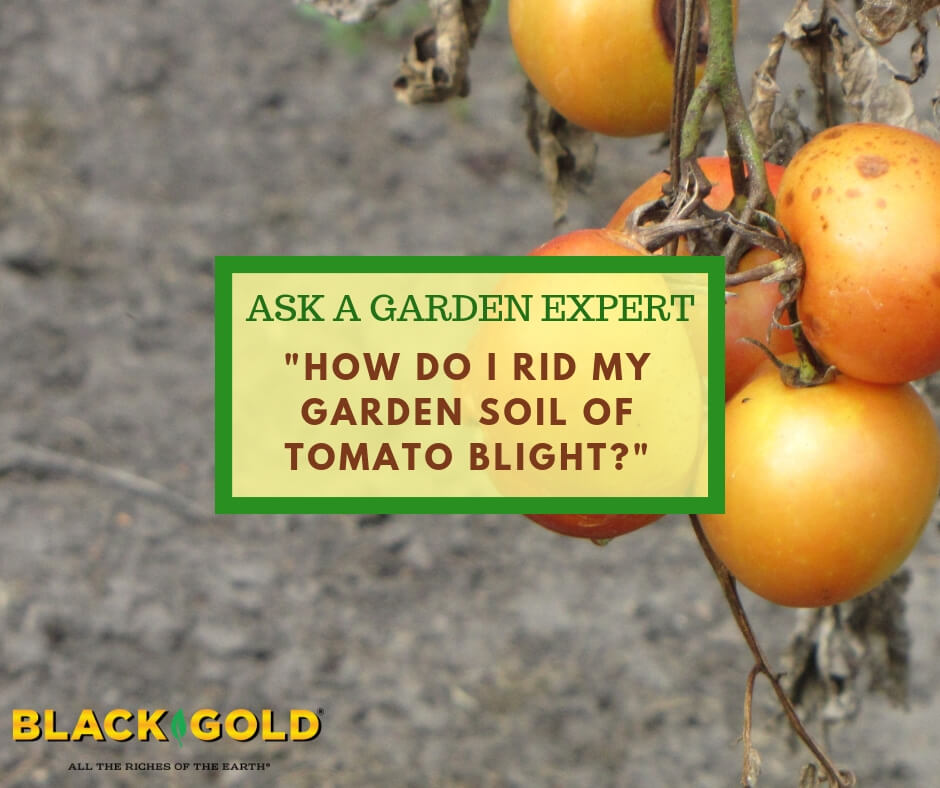
“How do I get rid of blight (early and late) spores in my tomato garden soil?” Question from Thomas of Maineville, Ohio
Answer: Tomato early blight and late blight are terrible soil-borne diseases that all tomato growers fear. Thankfully, you can manage them once they get into your soil. I’ll provide an overview of each disease and its management.
Tomato Early Blight
Early blight (Alternaria tomatophila and Alternaria solani) can appear early in the life cycle of the tomato by causing seedling damping off (rot). At later stages it can cause stem cankers, leaf blight, and black fruit rot. You know your tomatoes have early blight when you start to see leaves with circular lesions, reaching up to 0.5 inches in diameter, with dark concentric circles inside.
Tomato Late Blight
Tomatoes with oily patches and plants with stem lesions and browning leaves – it’s not what a tomato grower wants to see because these are the telltale signs and symptoms of late blight (Phytophthora infestans). Most commonly known for causing the Irish Potato Famine, late blight is spread by a pathogen that survives and overwinters on infected plant material. Though it kills tomatoes more slowly than potatoes, it is equally lethal and destroys tomato fruits. If the plants are subjected to drought stress, the disease takes them more quickly.
Managing Tomato Blight
There are several methods for controlling and avoiding both blight diseases. If you have had blighted tomatoes in the past, rotate crops on a three-year cycle to help keep soil disease-free. This means rotating where you plant your tomatoes and allowing three years to pass before planting them in the same spot. The absence of live plants should rid the soil of the disease in this time. Also, scout for infected plants and immediately take them far away from the garden and compost bin. Bag and toss them instead. Finally, keep a lookout for and remove weedy tomato relatives that can harbor blight. These include nightshade and ground cherry.
To prevent further tomato blight from entering your garden, plant only healthy plants that you have grown from seed or purchased from a reliable grower. (Nothing is worse than being sold diseased plants!) Also, plant only blight-resistant varieties (check out this list from Cornell University).
In the garden, avoid moist soil by planting tomatoes in well-drained, aerated, raised beds amended with Black Gold Garden Soil and keep plants strong and vigorous by feeding them with a tomato & vegetable fertilizer. It also helps to encourage air-flow by spacing plants well and keeping them pruned (click below for a tomato pruning tutorial). Finally, drip irrigation helps keep plants drier to reduce disease spread. At the end of the season, clean all plant material from your garden for good measure.
Be diligent and you can beat late blight.
Jessie Keith
Black Gold Horticulturist

